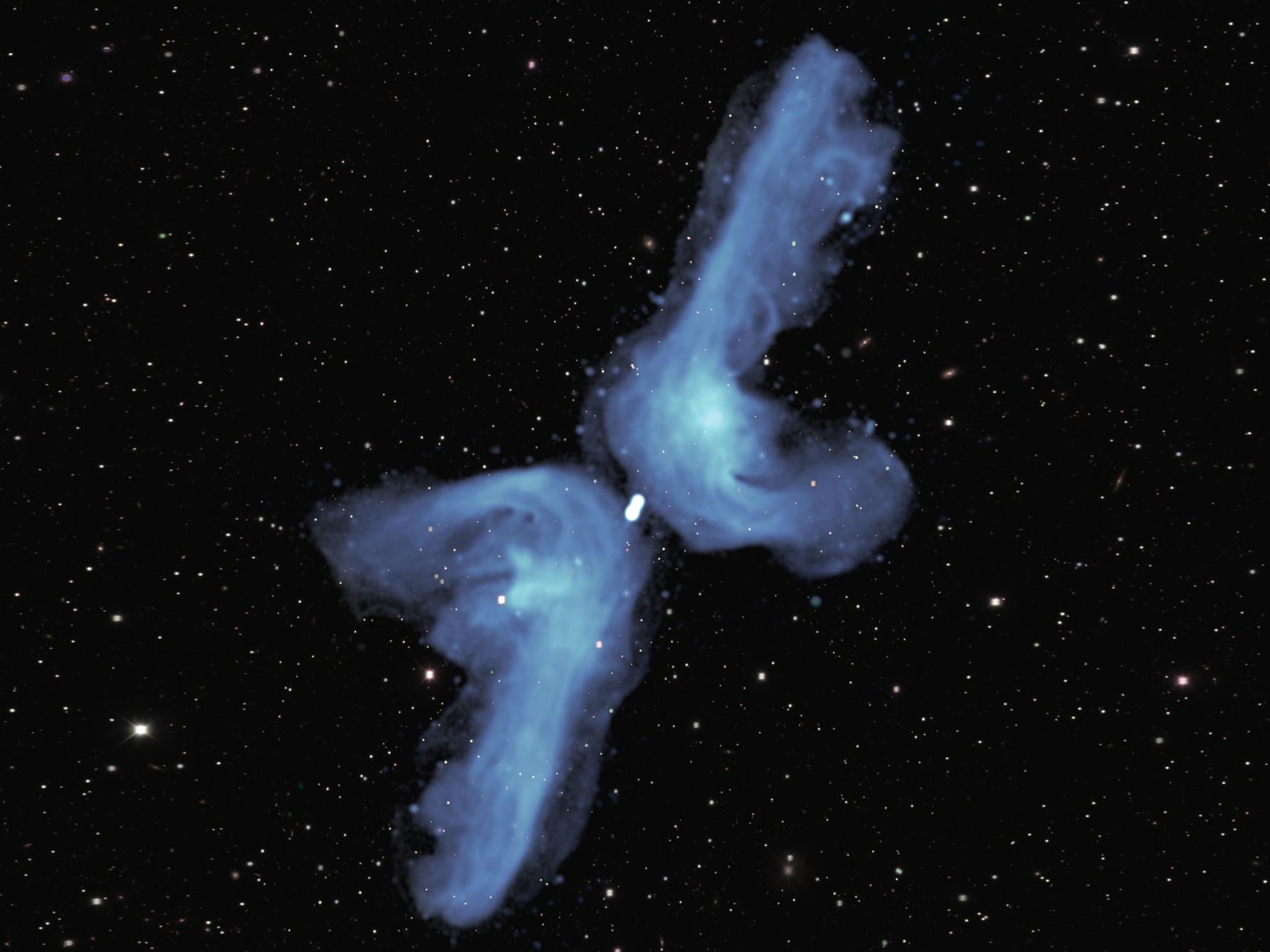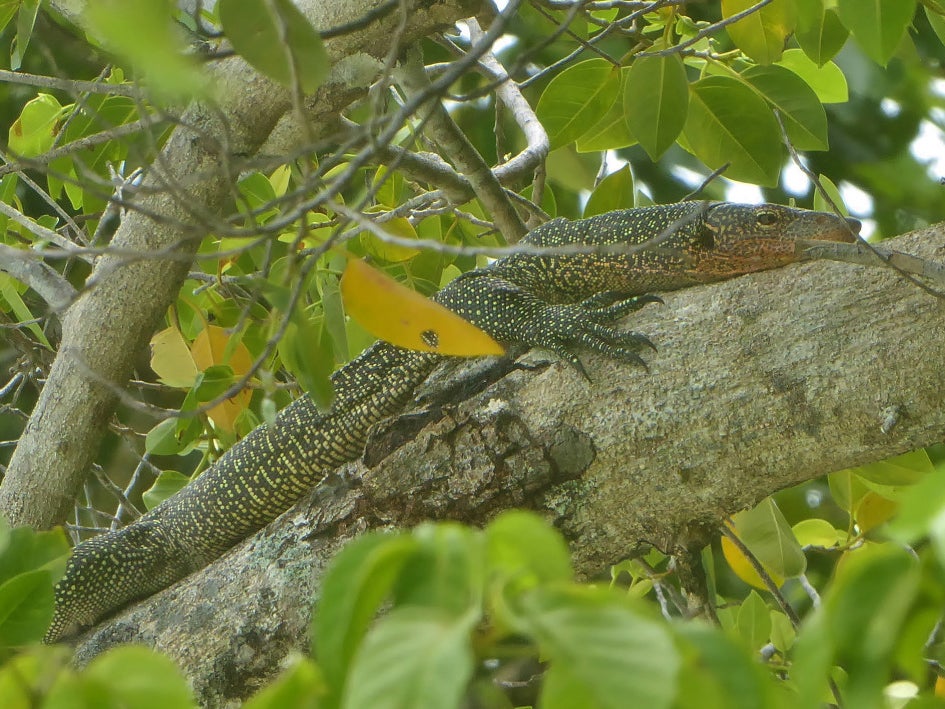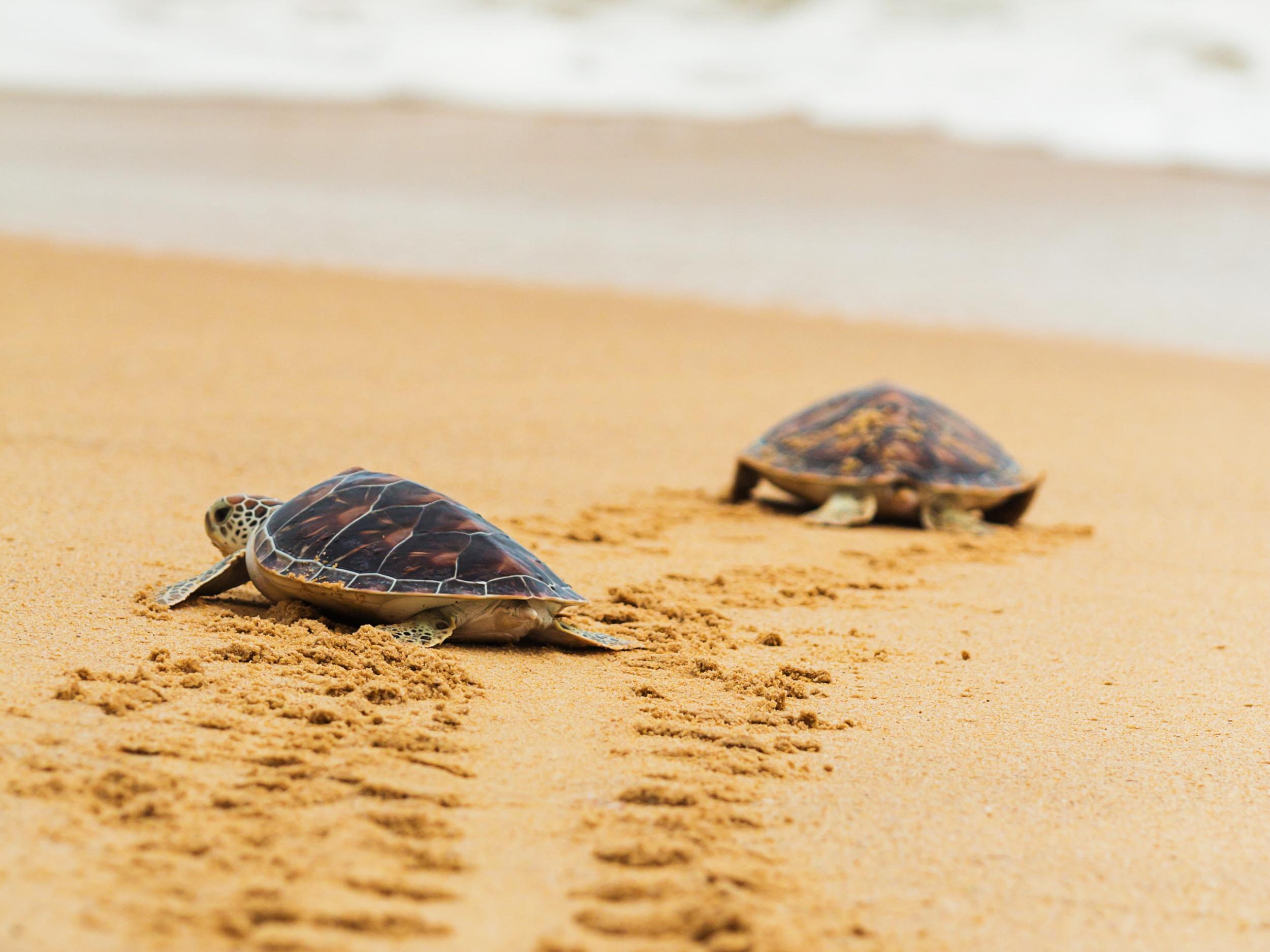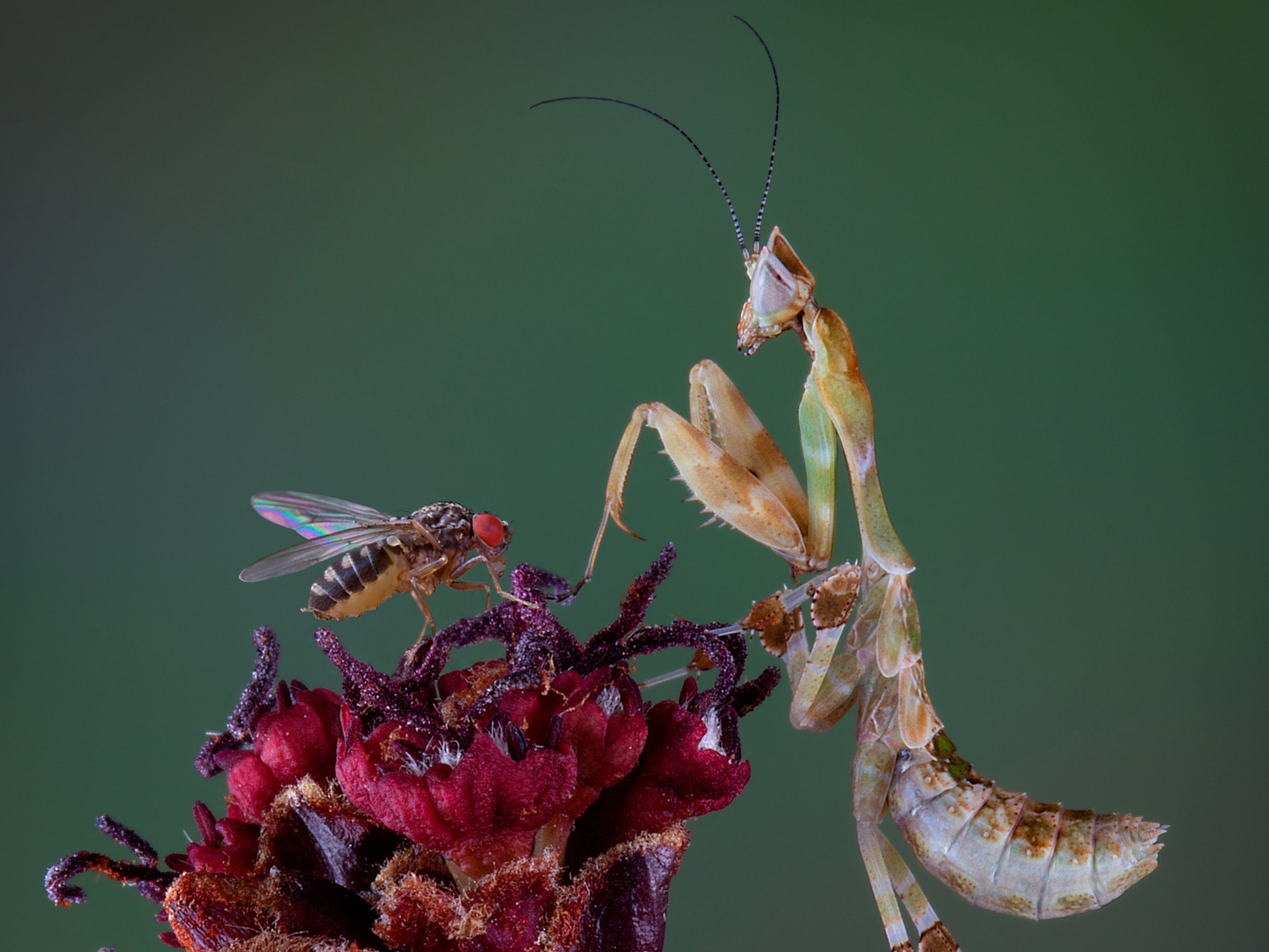Science news in brief: From black hole boomerangs to deadly praying mantises
And other stories from around the world

Your support helps us to tell the story
From reproductive rights to climate change to Big Tech, The Independent is on the ground when the story is developing. Whether it's investigating the financials of Elon Musk's pro-Trump PAC or producing our latest documentary, 'The A Word', which shines a light on the American women fighting for reproductive rights, we know how important it is to parse out the facts from the messaging.
At such a critical moment in US history, we need reporters on the ground. Your donation allows us to keep sending journalists to speak to both sides of the story.
The Independent is trusted by Americans across the entire political spectrum. And unlike many other quality news outlets, we choose not to lock Americans out of our reporting and analysis with paywalls. We believe quality journalism should be available to everyone, paid for by those who can afford it.
Your support makes all the difference.A black hole’s boomerangs
Astronomers have deciphered the dynamics of yet another great trick that monster black holes can play.
In many galaxies, jets of energy are squeezed outward by the black hole that lurks at the centre, and go shooting off in opposite directions into space.
But in a few bizarre-looking galaxies, the jets take the form of four beams in the shape of an X. Now, radio astronomy observations have shown how that happens.
Astronomers have no trouble understanding how black holes – objects so dense that not even light can escape the tombstone grip of their gravity – can become the most luminous objects in the universe, powering quasars. The pressure in the fat, fiery swirl of doom that surrounds a black hole expels high-energy particles from the top and bottom of the doughnut.
But a galaxy known as PKS 2014-55 is different. This old, elliptical galaxy is about 800 million light-years from Earth in the constellation Telescopium, and its jets are shaped like two boomerangs placed back to back to form an X.
Why? Perhaps, some astronomers thought, the central black hole was wobbling, like a lawn sprinkler throwing jets in different directions. Or maybe a pair of supermassive black holes were colliding.
But observations by an international group of astronomers with a powerful new South African radio telescope, MeerKAT, have provided an alternate explanation.
The dynamics of the jets, it seems, more closely resemble those in an elaborate Las Vegas fountain, with water going up and down and flowing in designer configurations. In this case, superhot gas is being pumped up 2.5 million light years into intergalactic space. It then cascades back and splashes sideways off the centre of the galaxy, sculpting an X in the cosmos, as if marking a treasure.
“Material falls back and gets reflected around the centre,” says Fernando Camilo, chief scientist of the South African Radio Astronomy Observatory, which built MeerKAT.
The team, led by William Cotton, an astronomer with the National Radio Astronomy Observatory in the United States, reported its results last week in the Monthly Notices of the Royal Astronomical Society.
“It’s all quite neat,” Camilo says.
Why is this chocolate shimmering like a rainbow?

Earlier this month, Samy Kamkar shared his latest creation on Twitter: chocolate that shimmers like a rainbow.
Kamkar is not a chocolatier. He’s a founder of the internet security company Openpath, and gained early internet notoriety in 2005 for releasing a virus on the Myspace social network. He also has a 3D printer and a penchant for experimenting with his food.
A few years ago, he had seen a similar iridescent effect on black plastic at a maker meet-up in Los Angeles – this object provided the first taste of inspiration.
“I wondered what else I could do this on,” he says.
Kamkar first considered making the iridescent effect on hard candy, but then decided that would be too easy. Chocolate, with its melty gooeyness, seemed like a bigger challenge. After two months of playing around, Kamkar created a repeatable technique.
“Anyone can do this at home,” he says. “There’s no coating. There’s no special ingredient. It’s the surface texture of the chocolate itself that’s producing it.”
He designed a 3D model for casting that included, at its base, a saw-tooth wave pattern. Each of the grooves is a few micrometres wide. The chocolate, when poured inside, adapted the inverse of this pattern on its surface.
To prepare the chocolate for this mould, Kamkar tempered it – melting and cooling the chocolate in a calibrated sequence, with each step allowing certain crystalline structures to form and give the chocolate its optimum properties.
Next, Kamkar pressurised the chocolate in a vacuum chamber to prevent air bubbles from forming, though he says this step might not be necessary.
The principle behind this chocolaty magic is diffraction – when light interacts with a surface and is drawn or pulled apart. It’s similar to refraction, which occurs when white light is broken into a rainbow through a prism.
On an object with many uniform lines and edges, like Kamkar’s cast chocolate, diffracted light becomes the dominant light that you see, creating iridescence. This same process – parallel reflective grooves in spacing comparable to the wavelength of light – creates rainbows on the surface of a compact disc.
“It’s the best tasting diffraction grating you’ll ever see,” says David A Weitz, a professor of physics and applied physics at Harvard. “It’s a simple idea. And to me, when I say something is simple, it is the best compliment I’ll pay.”
These large carnivorous lizards are right where they belong

You can’t accuse a monitor lizard of being a picky eater.
The carnivorous, fork-tongued reptiles feed on insects, spiders, bird eggs, mollusks, crabs, fish, amphibians and rodents – dead or alive. Deer represent a large portion of the diets of the Komodo dragon, the largest monitor lizard species, which is native to eastern Indonesia.
“They’ll feed at garbage piles and eat chicken bones. Whatever’s available,” says Fred Kraus, an evolutionary biologist at the University of Michigan. “They probably would take puppies, too, if they get them.”
Monitor lizards have been found living on the most far-flung islands of Micronesia in the Pacific Ocean. For decades, people assumed humans dropped off these unfussy carnivores, turning them into especially threatening ecological invaders. But a study published in Royal Society Open Science refutes this presumption, demonstrating that the monitor lizards of Palau, the Western Caroline Islands and the Mariana Islands are previously undescribed species native to those islands.
The team of scientists argues that the lizards likely rode ocean currents up to 1,500 miles in some cases, from Indonesia northeastward, where they naturally colonised these Pacific islands hundreds of thousands of years ago.
“Some of those islands are so remote. It’s pretty difficult to explain how they got there,” says Valter Weijola, a biologist at Finland’s University of Turku and lead author of the study. But his team’s research shows they made this ocean crossing without help from humans. And since their disembarkment, they’ve evolved into two distinct species.
Researchers examined more than 50 Micronesian monitor lizard specimens from museums around the world. First, they compared physical characteristics, measuring and noting details like body proportions, scale pattern and tongue colour.
Then they ran molecular tests on tissue samples. DNA sequencing and analysis revealed two Micronesian species were genetically distinct from other known monitor lizards in the Asia-Pacific region. It also suggested each evolved in geographic and genetic isolation long before any humans arrived in Micronesia.
That the islands included in the study have never been in contact with any continental landmass, nor with each other, indicates the lizards must have arrived overseas, perhaps on a raft of vegetation.
“They’re predisposed to being swept out to sea,” Kraus says. “They can survive a good while, riding that current.”
Researchers hope the revelation that monitor lizard species are natives could shift eradication efforts towards the islands’ other known invasives, such as brown tree snakes, feral pigs and nonnative deer, cats and rats.
Mother sea turtles might be sneakier than they look

The birth process of sea turtles provides some of the most endearing images in nature. Mother turtles trudge up on to the beach at night, dig a nest and lay their eggs, then haul themselves back into the ocean. Weeks later, dozens of adorable little hatchlings, tiny flippers churning through sand, scamper into the sea for the first time.
But we rarely see what happens immediately after the mother lays her eggs and before she slides back into the sea.
“People find that stage boring, and they just don’t understand it,” says Malcolm Kennedy, a zoologist and professor of natural history at the University of Glasgow. “The turtles flap around, and that’s it. Everyone goes home.”
But that flapping and scattering of sand fascinated Kennedy, who released a study last week in Royal Society Open Science with Tom Burns, also a zoologist at the University of Glasgow. They found that the turtles are actually creating decoy nests designed to fool predators and prevent them from sniffing out the real nests and devouring their eggs. Their findings challenge earlier theories that the turtles were disguising their nests and, in some cases, easing hatchlings’ trips to the water.
Kennedy and Burns observed two species of sea turtles – the massive leatherbacks and the smaller hawksbill – in Trinidad and Tobago from 2013 through 2019. They found that the turtles did not linger near the nests they had just dug up. They moved as far as several feet, in multiple random directions, stopping to scatter sand at various “stations” along the way, ranging from two to more than a dozen.
The turtles also spent a good deal of energy and time – roughly 30 minutes – on this endeavour, exposing themselves to dangers from predators and the hot, rising sun.
“It just emphasises how important this activity is for them,” Kennedy says. “Why would they spend that time disguising an area that is not near their nests?”
There are more than a half dozen species of sea turtles, and others may not engage in such behaviours. Roldan A Valverde, a biologist at Southeastern Louisiana University and the scientific director of the Sea Turtle Conservancy, says he is “sceptical” of the study and noted that the leatherback’s enormous size – they can grow to over 1,000 pounds – and exaggerated movements could account for the seemingly random sand scattering.
Praying mantises: More deadly than we knew

A praying mantis watches intently as a fly bobs by. In less than a blink, she’s snatched it up. When the tape is played back in slow motion, we see the mantis pause and calibrate, almost like an experienced baseball catcher who has realised she’s dealing with a knuckleball.
It’s an impressive highlight reel. As detailed in a paper published this week in Biology Letters, it’s also evidence that mantises strike less like automatons and more like active hunters, calibrating their attacks to more efficiently capture their prey as it flies by at different speeds.
Predatory animals are traditionally divided into two categories based on how they catch their meals. The first group, pursuit predators, run down their prey. Researchers have uncovered “extraordinary examples of how flexible their pursuit can be”, says Sergio Rossoni, who performed the new study as a master’s student at the University of Sussex, and is now a zoology doctoral student at the University of Cambridge.
The second group, known as sit-and-wait predators, skulk until the time is right, and then, bam – they strike. In the past, such predators were “thought to be quite stereotypical in their behaviour”, Rossoni says, almost like windup toys. Researchers have described praying mantis strikes in particular as always occurring “at the same rate with the same movements”, he says.
Rossoni and his then-supervisor Jeremy Niven, a zoology professor at the University of Sussex, decided to test praying mantises further, and see whether they varied their approach with slow or speedy prey.
For his experiment, Rossoni placed one Madagascan marbled mantis at a time on a raised platform underneath a bright light. He then swung a target – either a dead bug, or a bead that looked like one – towards the mantis on a transparent wire. The target could move at three speeds, each meant to approximate a different type of mantis prey.
Rossoni and Niven found that the mantises did indeed adjust their strike speed, according to how quickly the target was moving. Most of that modulation occurred in the approach phase – when presented with a slower target, the mantises would raise their limbs more slowly or pause in the middle, in a zombielike pose.
And if they initially miscalculated the speed of their prey, the mantises would often “correct their own mistakes” with a similar pause, Rossoni says. “Considering that some of the strikes are less than a tenth of a second, this is quite extraordinary.”
© The New York Times
Join our commenting forum
Join thought-provoking conversations, follow other Independent readers and see their replies
Comments